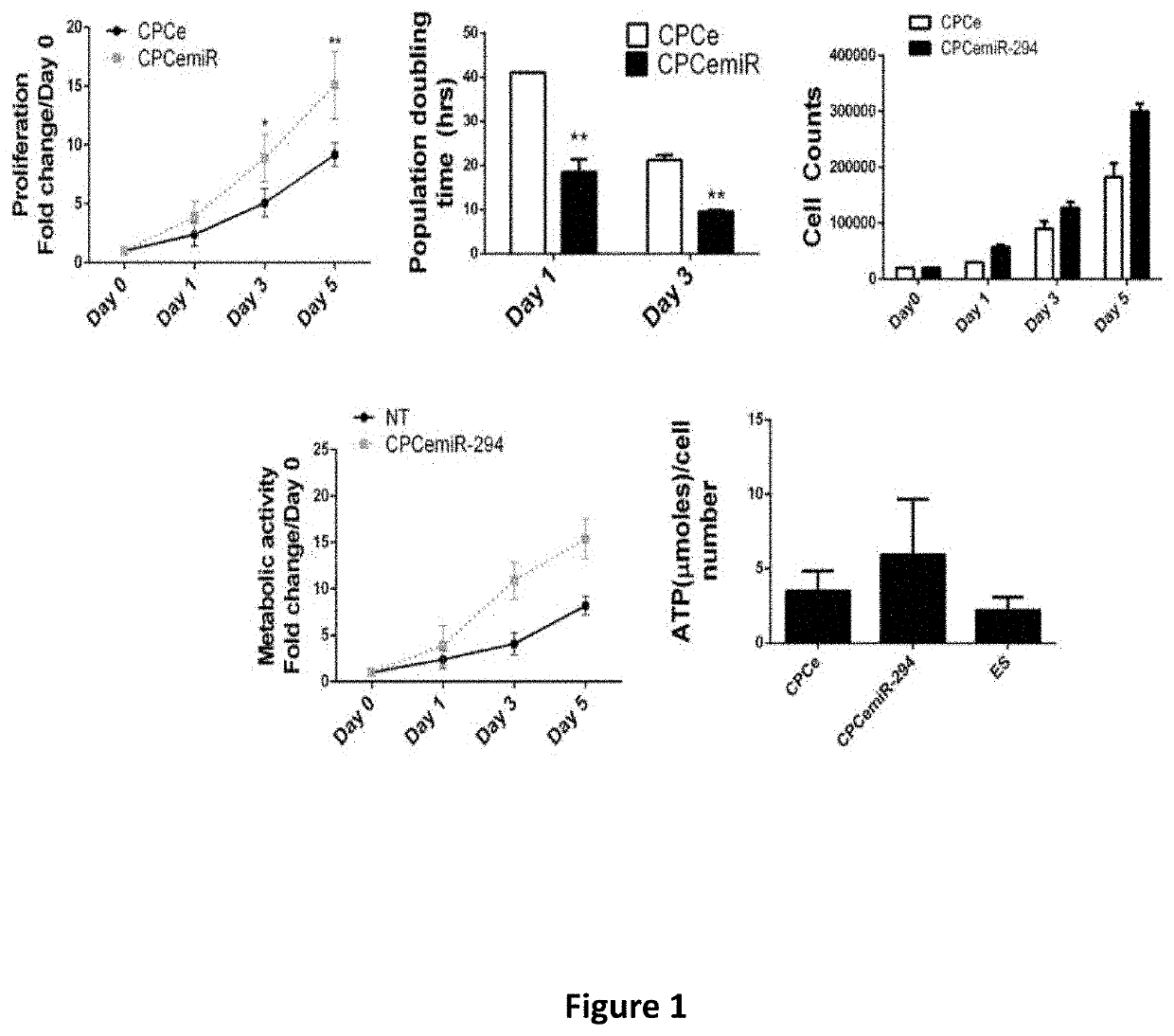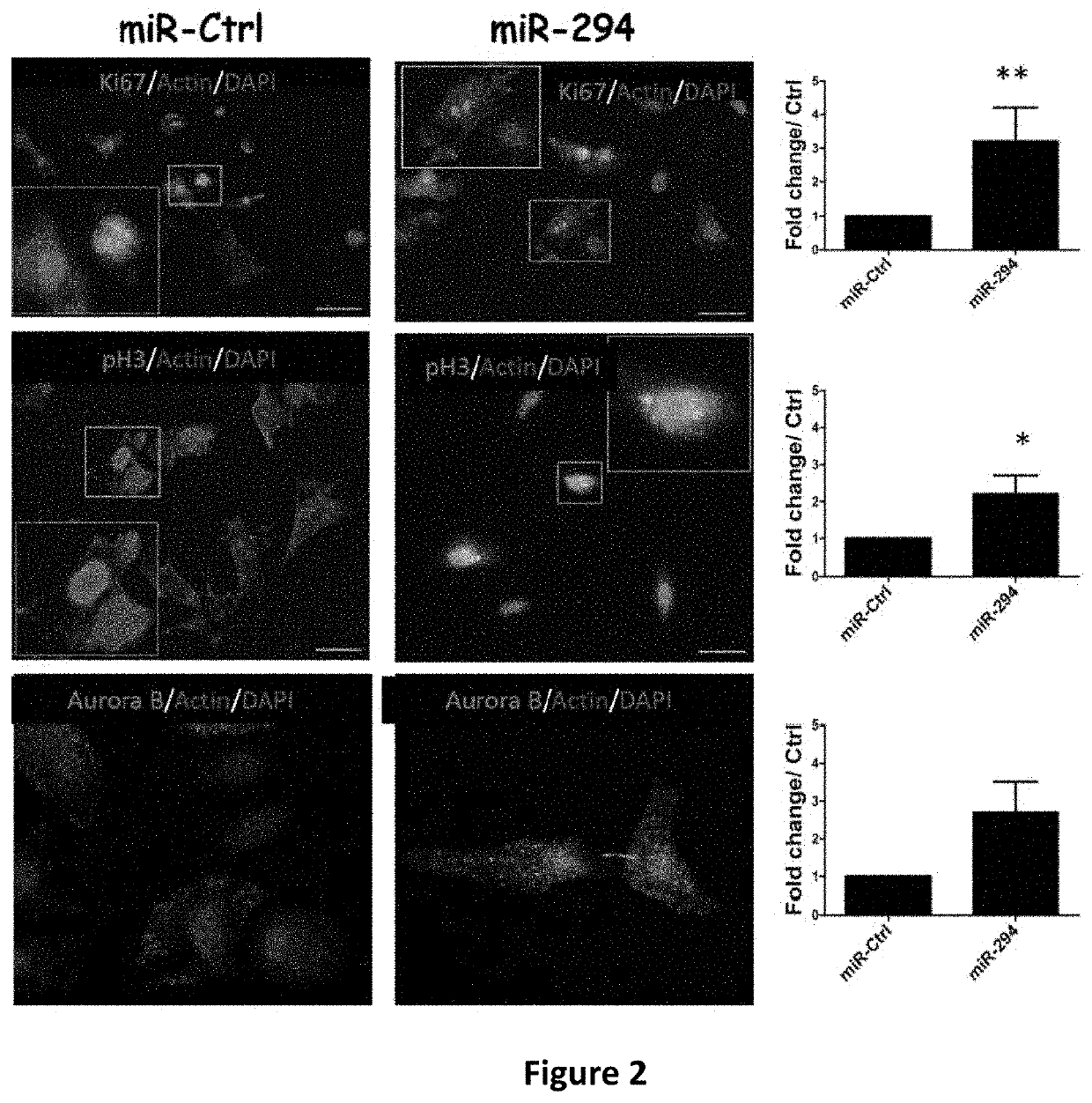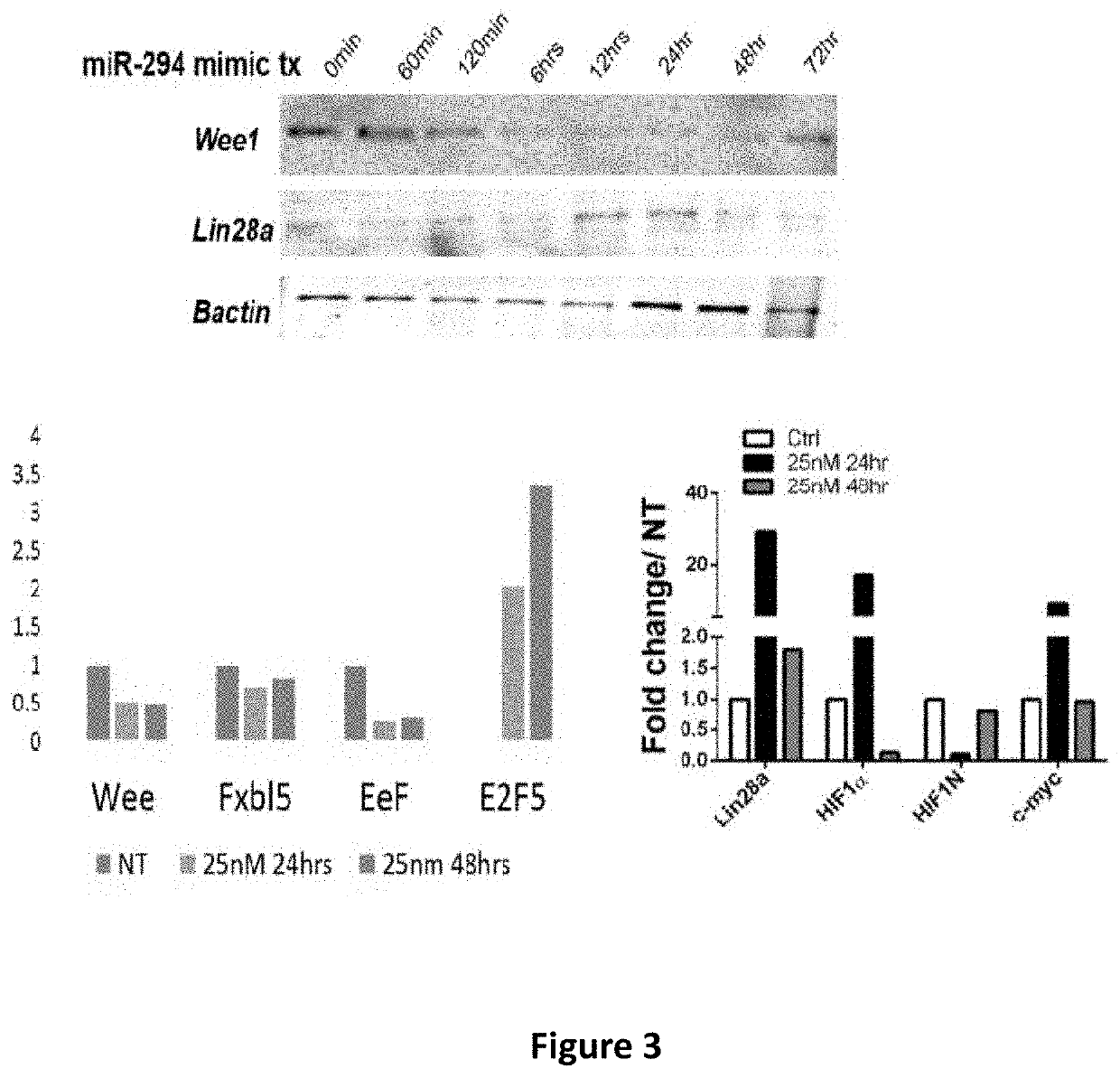Microrna-294 and lin28a as a driver of cardiac tissue proliferation in response to pathological injury
a technology of microrna-294 and lin28a, which is applied in the direction of skeletal/connective tissue cells, cell culture active agents, antibody medical ingredients, etc., can solve the problems of heart failure, death, and inability to restore lost myocardium to injury, and achieve the effect of reducing the risk of cardiac diseas
- Summary
- Abstract
- Description
- Claims
- Application Information
AI Technical Summary
Benefits of technology
Problems solved by technology
Method used
Image
Examples
example 1
and Cardiac Repair
[0183]Over the years, microRNAs (miRNA) have emerged as important regulators of cardiac development and function (FIG. 2). Expression of various miRNA families directly correspond to physiological and pathological changes in the cardiac milieu (Chen et al., Proc Natl Acad Sci U S A. 2008; 105:2111-2116; Rao et al., Circ Res. 2009; 105:585-594) while their loss or impairment is associated with development of cardiomyopathies and heart failure (Thum et al., Circulation. 2007; 116:258-267; van Rooij et al., Proc Natl Acad Sci USA. 2006; 103:18255-18260). The developmental heart is characterized by high cardiomyocyte turnover that is lost with adulthood (Porrello et al., Science. 2011; 331:1078-1080). The miRNA signature in the adult heart undergoes a dramatic shift and expression of many proprolfierative miRs, characteristic of the developmental stages that are either lost or altered (Chen and Wang, J Mol Cell Cardiol. 2012; 52:949-957; Tian et al., Sci Transl Med. 20...
example 2
gulator of Survival, Proliferation and Bioenergetics
[0190]Lin28a is a bona fide downstream target of miR-294 (Melton et al., Nature. 2010; 463:621-626; Hanina et al., PLoS Genet. 2010; 6:e1001163) and critical for growth and metabolism of pluripotent stem cells (Gruber et al., Nucleic Acids Res. 2014; 42:9313-9326). Lin28a expression is lost in adult tissues during development while its reintroduction leads to reprogramming cellular bioenergetics into a juvenile state thereby enhancing organ repair and regeneration (Shyh-Chang et al., Cell. 2013 Nov. 7; 155(4):778-92; Shyh-Chang and Daley, Cell Stem Cell. 2013 Apr. 4; 12(4):395-406). Lin28a is known to bind and increase translation of several key metabolic enzymes and target mRNAs for growth and survival (Shyh-Chang et al., Cell. 2013 Nov. 7; 155(4):778-92; Peng et al., Stem Cells. 2011 March; 29(3):496-504). In the cardiac context, emerging data suggests a cardioprotective role for Lin28a against ischemic injury (Zhang et al., PLoS...
example 3
nt Stem Cell microRNA-294 as a Mediator of Cardiac Proliferative Response in the Heart After Myocardial Infarction
[0196]The embryonic heart is composed of rapidly dividing cardiomyocytes that give rise to a working myocardium. Cardiomyocytes retain some proliferative capacity in neonates but lose most of it in adulthood. Embryonic stem cell cycle (ESCC) miRs are a class of microRNAs regulating the unique cell cycle of ESCs and their characteristic pluripotency. Nevertheless, expression of miR-294, a member of the ESCC miRs is lost during developmental transitions from the ESCs to mature cells. The effect of miR-294 to induce cardiac proliferation and heart function has not been previously studied.
[0197]The data presented herein demonstrates that the miR-290 family, including miR-294, drives cardiomyocyte / CPC cell cycle leading to augmentation of cardiac function after myocardial infarction.
[0198]The experimental methods and results are now described:
[0199]An analysis of miR expressi...
PUM
 Login to View More
Login to View More Abstract
Description
Claims
Application Information
 Login to View More
Login to View More - R&D
- Intellectual Property
- Life Sciences
- Materials
- Tech Scout
- Unparalleled Data Quality
- Higher Quality Content
- 60% Fewer Hallucinations
Browse by: Latest US Patents, China's latest patents, Technical Efficacy Thesaurus, Application Domain, Technology Topic, Popular Technical Reports.
© 2025 PatSnap. All rights reserved.Legal|Privacy policy|Modern Slavery Act Transparency Statement|Sitemap|About US| Contact US: help@patsnap.com



